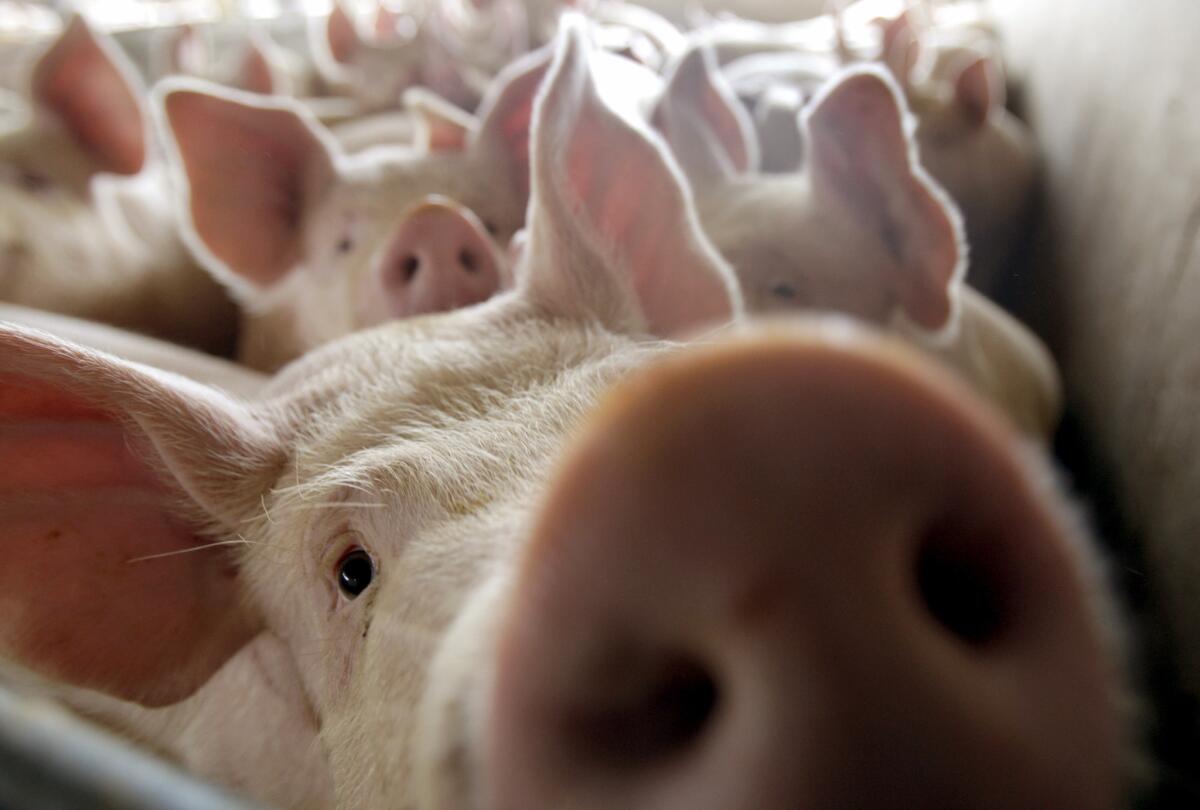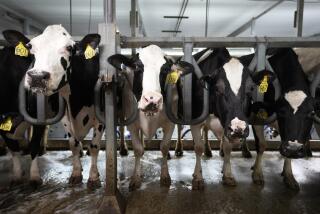Antibiotics, animals and us

- Share via
Describing the routine use of antibiotics in meat and poultry production as a “serious threat to public health,” the U.S. Food and Drug Administration in 2010 called on livestock operations to voluntarily reduce their reliance on the medications. But an FDA report this month indicates that, so far, the results are unimpressive: Antibiotic sales to livestock operations rose in 2011, rather than falling.
It is unclear why the numbers went up — perhaps there were simply more animals — and in fact, new legislation seeks to require better information on this score. But at a minimum, it appears that it’s not enough simply to ask the industry to change its ways.
The routine use of low doses of antibiotics on perfectly healthy animals helps prevent disease from sweeping through crowded livestock operations and is a low-cost way to promote animal growth. Little wonder that 29.9 million pounds of the drugs were sold to meat and poultry producers in 2011.
The danger isn’t that Americans are eating infected meat or ingesting antibiotics, which must be cleared from the animal’s system before slaughter. It’s that this routine, low-level administration of medications gives rise to so-called superbugs that can withstand common antibiotics, many of which are also important for human use.
It was unlikely from the start that the FDA’s call for voluntary action would work. At the time, the pork industry said it already was careful with its use of antibiotics, and the response of the National Cattlemen’s Beef Assn. was that any rules should take into account the misuse of antibiotics in humans. In fact, doctors have become more aware in recent years that antibiotics have been over-prescribed and improperly taken for such afflictions as common colds, which are caused by viruses, not bacteria. But that doesn’t let the livestock industry off the hook. Four times as many pounds of antibiotics are used on livestock as on people, and human use has remained stable since 2006, while livestock use has grown steadily.
In 1977, the FDA took the first steps toward withdrawing approval for use of two common antibiotics, tetracycline and penicillin, on livestock. But it never followed through. The Natural Resources Defense Council filed suit in 2011 over the FDA’s inaction and won, but the FDA is appealing.
Later this year, the public can expect legislation — which has come up every year for well over a decade and been rejected, thanks to industry lobbying — to limit livestock operations’ use of antibiotics that are important for human use. Given the FDA’s apparent timidity, the need for such a law is clear.
More to Read
A cure for the common opinion
Get thought-provoking perspectives with our weekly newsletter.
You may occasionally receive promotional content from the Los Angeles Times.






